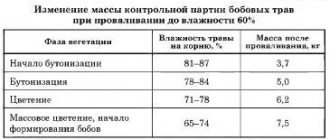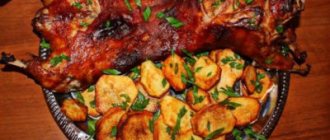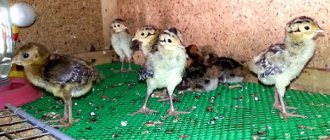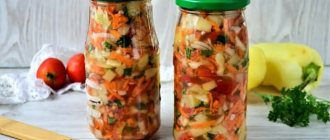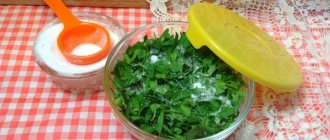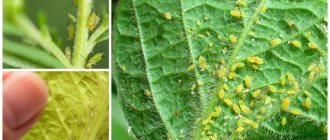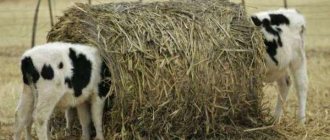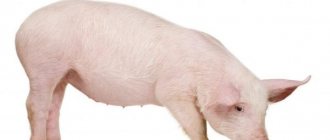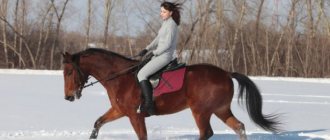What is haylage
When preparing green feed for farm animals, it is necessary to take into account what haylage is and the technology for its preparation. It is a canned and dried green mass harvested at the initial stage of the growing season. Thanks to this, the haylage retains the maximum amount of useful nutrients.
The humidity of the haylage should be within 50-55%; anaerobic storage conditions and physiological dryness of the green mass are used as a preservative factor. Due to this humidity indicator, the vital activity of pathogenic microorganisms slows down.
One of the features that distinguishes haylage from silage is the reduced activity of lactic acid bacteria due to anaerobic conditions. Due to this, a minimum amount of organic acids is formed in the haylage and a high sugar level is maintained. At the same time, the pH acidity indicator, depending on the type of herbaceous plants, does not exceed 4.5-5.5 units. This ensures high nutritional value of haylage and significantly better absorption of nutrients than when feeding silage.
Homemade pitchforks
For hay harvesting, stacking and tedding, pitchforks are needed. The length of the sharp tines must not exceed 65 cm, and the total length of the forks must be at least two meters. Homemade hay forks can be easily made from a wooden handle and high-strength metal rods with a diameter of at least 1 cm. The rods are cut with a grinder into four equal sections, 60 -65 cm each. A section of a strong steel pipe is used as a crossbar, to which a welding machine and weld the teeth. For convenience, the teeth can be bent - this will facilitate the stacking process. A groove is welded onto the opposite side into which a wooden handle will be inserted. The handle is securely fixed with screws.
Herbs used
Before preparing haylage at home, you need to know what herbs are used for this.
Recommended plants:
- clover;
- alfalfa;
- sainfoin;
- cereal-legume mixtures.
To prepare haylage, you can use leguminous grasses, as well as their various mixtures with cereals. Legumes contain approximately 2 times more easily digestible carotene and proteins.
To obtain highly nutritious feed, it is necessary to mow grass in a timely manner - legumes during budding, cereals at the initial stage of spikelet formation. At the beginning of the flowering stage, harvesting ends.
It is very important not to miss the optimal time for harvesting grasses for haylage. When the grass reaches a height of 25-30 cm, lodging begins, which makes mowing much more difficult. In addition, after 8-10 days from the beginning of budding or heading, the plants begin to flower. After this, the grass can only be used for making hay.
Description
How to make hay? Hay is dried grass, which is the basis of nutrition for farm animals in winter. This product is fed to large and small livestock (horses, sheep, cows, goats, rabbits, pigs), as well as ducks, chickens, geese and other poultry. Only in the second case less dried grass is needed. The quality of hay depends not only on the grass itself. In order for hay to be nutritious and retain the entire complex of vitamins, it must be prepared correctly. This process has its own characteristics. Information about the nuances of hay harvesting (cutting, drying, storing) is presented in the article.
The main advantages of haylage over silage
Before preparing haylage, it is necessary to take into account the main features of this type of feed and its advantages over silage:
- The minimum loss of nutrients does not exceed 10%. Due to this, high levels of sugars and carotene are maintained.
- Humidity levels of up to 55% ensure good palatability of the feed, which contributes to increased milk production.
- Haylage is prepared from alfalfa and legumes and cereals, which guarantees its balance in proteins and energy.
- Due to the minimal level of moisture, haylage is perfectly stored for a long time, does not get wet or freeze.
- The food is prepared without the use of preservatives, so it has a completely natural composition.
For home use, haylage in bales is most suitable - it is characterized by minimal labor costs and short harvesting times.
What to feed the animals?
You need to know exactly what to feed the animals, because they all prefer different hay. This is due not only to the type of livestock, but also to their age. For example, a grass that is great for adults has a negative effect on little ones. Choosing the right feed is very important to keep your livestock healthy.
So which grass is best for farm animals? Everyone has different needs:
- Grain and legume (alfalfa) hay is more suitable for horses. Dried grass for these animals must be clean, free from dust and mold. Otherwise, horses will have health problems, pregnant mares may lose their offspring, and colic will be provoked in stallions. The ideal option for feeding a horse is cereal hay, as it is rich in calcium and phosphorus. Grain hay is suitable for foals and pregnant and lactating mares as it is rich in protein.
- Cows are not picky about hay. They can even eat dusty or slightly moldy grass. Cows that are raised for meat can be fed any type of hay, but lactating cows need cereal, which is high in protein. The best way to feed dairy cows is to give them good alfalfa hay. The more nutrients the mare receives, the more milk she will produce and the tastier it will be.
- Goats should be fed grain and legume hay, but not fed these types separately. Pure legumes (from vetch, clover, alfalfa, soybeans or lespedeza) are ideal for feeding kids and adult goats that are nursing foals or are pregnant. There should be no dust or mold on goat hay.
- Good leafy hay that is not coarse is suitable for sheep and rams. Adult animals need to be given high-quality cereal hay, but lambs need bean hay with thin stems, that is, cut during the growing season.
- Rabbits eat legume and cereal hay. It is the most nutritious, moderately coarse. Also suitable for these animals is dried grass from meadow and steppe herbs, which was mowed during the flowering of the plants and dried in the shade. Meadow and steppe proper hay will be especially useful for pregnant and lactating females and rabbits.
- Poultry is also fed hay in the winter. Ducks, geese, and chickens eat cereals, legumes, and wild grass. It is better to make preparations before flowering, since in this case more valuable substances for birds will be retained in the herbs. They are suitable for meadow timothy, awnless brome grass, and hedgehog grass. You can even make hay from the leaves of poplar, aspen, linden, birch, yellow acacia, and alder. Such products will be rich in vitamins and minerals. Poultry hay must be chopped.
It is necessary to remember all the listed features of the types of hay and give it only to those animals for which it is really suitable. If the wrong dried grass is given to livestock, it will negatively affect the health of the livestock.
How to prepare haylage at home
One of the most effective and simple ways to prepare haylage at home is to preserve green mass in polymer sleeves or film rolls. These technologies are developed specifically for farms with small livestock. The weight of such a roll can be 650-850 kg, it depends on the initial moisture level of the green mass.
The preparation of rolled silage consists of several successive stages:
- mowing;
- drying;
- formation of rolls and their transportation;
- wrapping with film;
- warehousing and further storage.
The diameter and length of the grass roll are approximately 150-170 cm. One such roll is designed for daily feeding of a herd of 45-50 heads. Rolled haylage is prepared very quickly - in 5 hours of work you can prepare at least 8 rolls of grass feed.
Mowing and drying
Mowing plants is usually combined with flattening them, due to which the flattened stems of legumes dry out very quickly. Raking and tedding of the mown grass is carried out with special rake-rakes, after which it wilts for 5-7 hours.
After drying, neat rectangular windrows are obtained, which makes rolling the green mass into rolls much easier.
Rolling and transportation
A special baler is used to form grass coils after withering. Rolling of rolls is carried out no later than 2 days after mowing the plants.
The formed rolls must be left in the fresh air for at least 3-4 hours. This will prevent the self-heating process from developing inside the grass coil. The pressed grass must be immediately placed in a vertical position, since fermentation of the green mass begins very quickly.
After this, the bale wrapper starts working. Each herbal roll is wrapped with at least 6-7 layers of film. After this process is completed, the rolls are transferred to a vehicle - this must be done very carefully so as not to damage the film wrapper.
Finally, the haylage rolls are transported to a further storage location. If the film is damaged during transportation, it must be sealed with tape, otherwise the activity of mold microorganisms increases, which will inevitably lead to damage to the haylage.
Warehousing and storage rules
It is advisable to store rolls of haylage under a canopy and store them, having previously fenced them off with a net. Due to the film, the green mass is not afraid of precipitation and sudden temperature changes.
To prevent food damage by birds and rodents, rolls of haylage should be installed in several rows, on top of each other. During storage, it is necessary to carefully inspect the film packaging of the reels. If air bubbles appear on it, they need to be pierced and the puncture site sealed with tape.
With proper storage, the use of haylage in animal feeding can begin within 6-8 weeks after storage. The shelf life of green food is no more than 1.5 years.
How much hay to harvest
It is estimated that an adult rabbit needs 300 grams of hay per day (including succulent feed).
A cow needs about 15 kg of hay daily (including haylage and succulent feed).
A goat, all other things being equal, is about 5 kilograms.
But in general, owners of small farms measure hay in carts, bales, stacks, but not in kilograms. It can be difficult for a novice owner of rabbits and goats to convert volumes into weight and understand whether the harvested hay is enough for the whole winter. Even experienced farmers can miss the mark and be left without hay in February-March.
Kukarek FORUMHOUSE Member
My hay will run out sometime in February, I agreed with the state farm; they have rolls of hay lying on the field three kilometers away. They made two trips, and now either the tractor drivers are drunk, or they are hauling timber, or the tractor has broken down.
Information about how many cubic meters of hay a goat needs is also needed to calculate the size of the hayloft. So, here is the formula for converting cubic meters to kilograms from FORUMHOUSE member Russlav82.
- Measure the circumference of the stack.
- Measure the height of the stack.
- Multiply the circumference by itself and the height.
- Divide the resulting number by 36 (this is a constant coefficient) - this will be the volume in cubic meters.
- A cube of hay swept five days ago will weigh 40 kg, a cube of hay swept a month ago will weigh 50 kg, and hay from a dry meadow weighs 65 kg.
TofslaVifsla FORUMHOUSE member
According to these calculations, it turns out that the attic of a 3*4 barn is quite enough for a goat...
Using this formula of his, Russlav82 calculates the amount of hay needed each summer, trying to “calculate downwards” so that there is guaranteed to be enough hay before grazing begins. And he spends the hay wisely: only straw goes into the bedding; moreover, a small part of the straw is always added to the hay, as a result, not so much is spent on the cow and bull.
Russlav82
The neighbors bring mountains of hay: both for bedding and forage, and then mountains of manure, it’s a pity, not manure, but just hay. And all without counting.
Therefore, without calculations there is no way. Hay isn't just money spent; a person who respects his work (mowing, drying, bringing, storing) will not throw it into manure.
Harvesting haylage into sleeves
The method of storing haylage in sleeves is suitable for large livestock farms with a large number of livestock. The essence of this method is to press green mass into polymer bales (bags) up to 8 m long and about 2.5-3 m wide.
The polymer is highly resistant to humidity and adverse weather conditions, so this haylage can be stored on the farm, in the open air. The average weight of one sleeve with grass mass can reach 180-250 tons.
Rules for mowing and transportation
The mown haylage is packed into polymer sleeves without pre-withering. After mowing, the green mass is flattened, then it is crushed and loaded onto a vehicle. Next, the haylage is delivered to the haylage packer.
Bagging and storage
When packing green mass, it is necessary to set the required density on the pressure regulator. Silage and haylage packers are characterized by high productivity - up to 100 tons per hour. This allows you to prepare up to 1000 tons of high-quality haylage in one day.
Haylage packed in sleeves does not require storage under a roof. It can be stored on the farm, next to the livestock building. To select the daily portion of feed, the required piece is simply cut off from the sleeve.
Harvesting haylage at home allows you to obtain nutritious and high-quality feed. It will not only increase the productivity of farm animals, but will also help reduce the amount of other feed in their diet. For small farms, it is most preferable to prepare haylage in rolls; for large livestock complexes, the method of packaging in polymer sleeves is more suitable.
Stacking
Hay harvesting ends with the hay being placed in a stack or stack for storage. A haystack is most often made round, about 6 meters high, with a diameter of about 2 meters. A haystack of this size is convenient to cover and use; the hay is protected from freezing and getting wet. To prevent the haystack from falling and being blown away by the wind, a pole is dug in the center, which is first covered with straw and then with hay. For strength, you can dig several poles diagonally from the central one. The formation of a haystack begins by laying it along the edges, and the central part is laid out last. The second and subsequent layers are shifted inward from the edge, gradually reducing the diameter. Once the haystack is formed, a wooden rake is passed over it and covered with twisted branches, a tarp, and tied with ropes.
